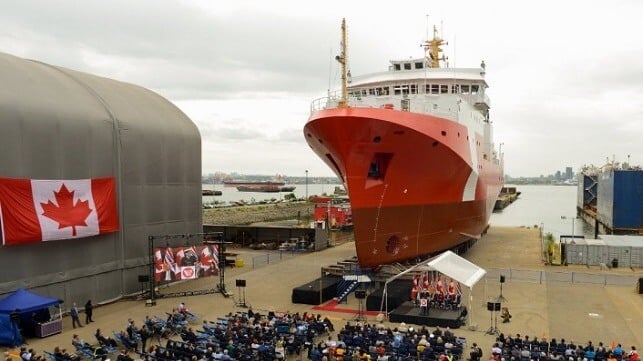Canada Moves its Coast Guard Into its Defense Ministry

The Canadian Coast Guard has formally transferred out of Fisheries and Oceans Canada and into Canada's national defense establishment, expanding its role and adjusting its orientation.
The transition brings the CCG's maritime domain experience into the mission of defending Canadian sovereignty, Canada's government said in a statement, much like the U.S. Coast Guard model. Some elements from Fisheries and Oceans Canada are also making the switch.
The integration is intended to increase information-sharing and coordination between the CCG, Canada's Department of National Defense and the Canadian Armed Forces (CAF) - but, unlike the USCG, the CCG will remain a civilian agency rather than a military branch.
"There are no plans to arm CCG personnel or assets, or to incorporate an additional enforcement role in the organization. The CCG will continue to deliver the essential services on which Canadians rely, including search and rescue, icebreaking, environmental conservation and protection, safe navigation, and supporting ocean science," said Minister of National Defense David McGuinty in a statement.
A new bill before Canada's parliament would expand the CCG's national security role somewhat further, if passed. The Stronger Borders Act proposes to add (among other measures) maritime domain awareness responsibilities for the CCG, especially in the Canadian Arctic. In an era of increasing competition in the Arctic, and with the Northwest Passage increasingly accessible, tasking additional assets for monitoring in the remote far north could have security benefits.
In the last election round earlier this year, Canada's Liberal party pledged to prepare the Canadian Coast guard for MDA activities and make it ready to support NATO operations. By doing so, Canada will now apply its existing coast guard spending towards its NATO defense spending target; Canada has long fallen short of the NATO readiness contribution target, which was set at two percent of GDP in 2014 and is now set to rise to five percent by 2035.
